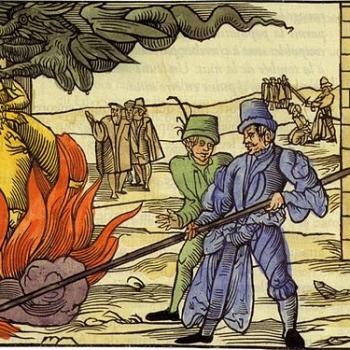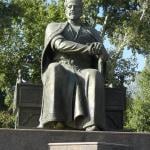 Here we launch into a discussion of NT Wright’s new Paul and His Recent Interpreters.
Here we launch into a discussion of NT Wright’s new Paul and His Recent Interpreters.
In chapter one, Wright commences by “setting the stage” of the discussion of Paul with a focus on the last century or so. He notes the formative influence of FC Baur (19th century) and the early 20th century debates about how Jewish Paul was in his upbringing, education, and thought. I particularly appreciated, in this chapter, his interest in the question of whether or not modern concerns should influence our readings of Paul. As always, Wright encourages a nuanced methodology that engages in the fourfold task of “history, content (in Paul’s case, ‘theology’), exegesis and application” (6).
In the second chapter, Wright turns to how theologies of Paul have developed, so naturally he takes a strong interest in the Reformation readings. He acknowledges that there was an obsession in that time period with the afterlife. Why?
Luther, Calvin, and their sixteenth-century colleagues, understandably granted the age in which they lived, were dominated in their approach to soteriology by the questions bequeathed to all Europe by the later mediaeval period, with its often short and brutal human life. What will happen to me after I die? (31)
In his comparison of Luther vs. Calvin on Paul, Wright is quite blunt in his assertion that Calvin did much better, esp with regards to allowing Christians to make sense of and find (positive) value in the OT Law (32). The next key figure that Wright highlights in this chapter is Albert Schweitzer. Wright sees the contributions of Schweitzer as a major step forward in Pauline scholarship as the Jewishness of Paul is recognized and affirmed by Schweitzer (see 34-35), despite the awkwardness of Schweitzer’s language of “Christ-mysticism” (35). Wright goes as far as to compare the thinking of Calvin and Schweitzer, finding them almost two peas in the same theological pod (See 37)! Along these lines Wright strongly affirms Schweitzer’s emphasis on being-in-Christ:
Schweitzer’s massive reinterpretation of Paul also did its best to reframe the questions that had to be asked, away from the narrow focus of ‘how can I find a gracious God’, or even ‘how can I go to heaven’, and on to the questions of what exactly ‘being in Christ’ might mean, and its consequences, and the question of how the early Christian ‘apocalyptic’ perspective can be retrieved, granted that even Paul’s successors found that task impossible. (38)
Unfortunately, as Wright argues, Schweitzer’s contributions were not taken very seriously at the time and Bultmann came to dominate the academic landscape. As for Bultmann, Wright gives extended attention to his work on Paul. Wright laments that Bultmann did not give much interest to Israel. In summary, Wright comments that “Bultmann’s Paul is an ancient version of a Lutheran existentialist, with little relation to Israel’s scriptures or to the world of contemporary Judaism, drawing instead on gnostic categories to construct a challenge, a daily summons, to live by faith in a world of apparent chaos” (43). Looking ahead, Wright claims that the NPP depended on a kind of return to Schweitzer and a rejection of Bultmann (see 44).
In the remaining pages of the second chapter, Wright gives brief comments on other key interpreters “pre-Sanders” including Bornkamm, Culmann, and Kaesemann. Here Wright challenges the way Kaesemann used the language of “apocalyptic,” signaling rather that it served as a “heuristic device” for the German theologian rather than a historically accurate interpretation of apocalyptic thought (see 56). But Wright commends Kaesemann for affirming Paul as a Jewish thinker (56). Wright continues on after Kaesemann to briefly survey the contributions of Ulrich Wilckens, Cranfield, and Ridderbos.
Summary
This was a fun and fascinating chapter – again, this kind of work (history of scholarship in its context) is a speciality for Wright, and even if one disagrees here and there with an assessment, his understanding of movements, currents, and trends (and why they happened) is undeniably breathtaking. After I read this chapter, I was convinced that this book belongs on par with Wright’s New Testament and the People of God and should be standard graduate reading for students of Paul.
Next up: the emergence of the “New Perspective on Paul”…















